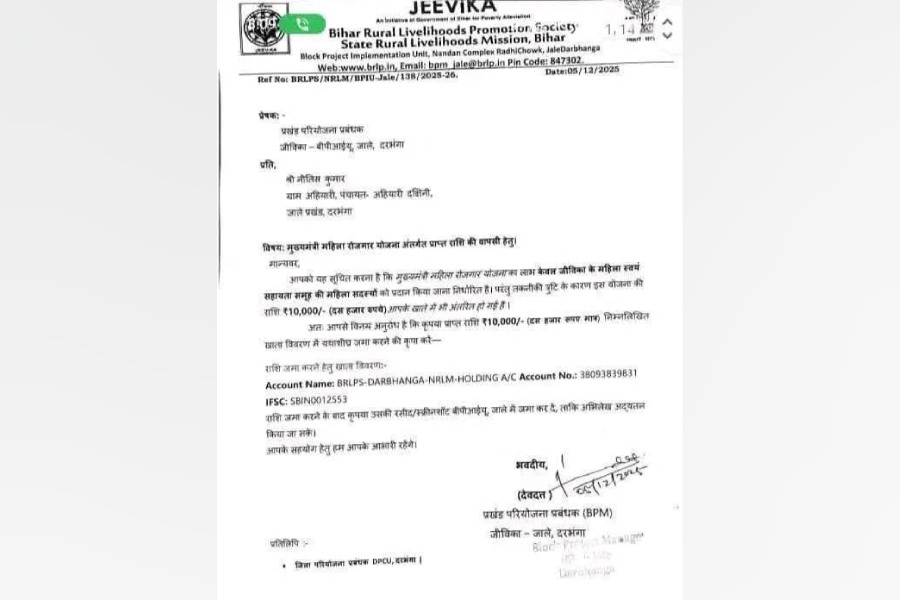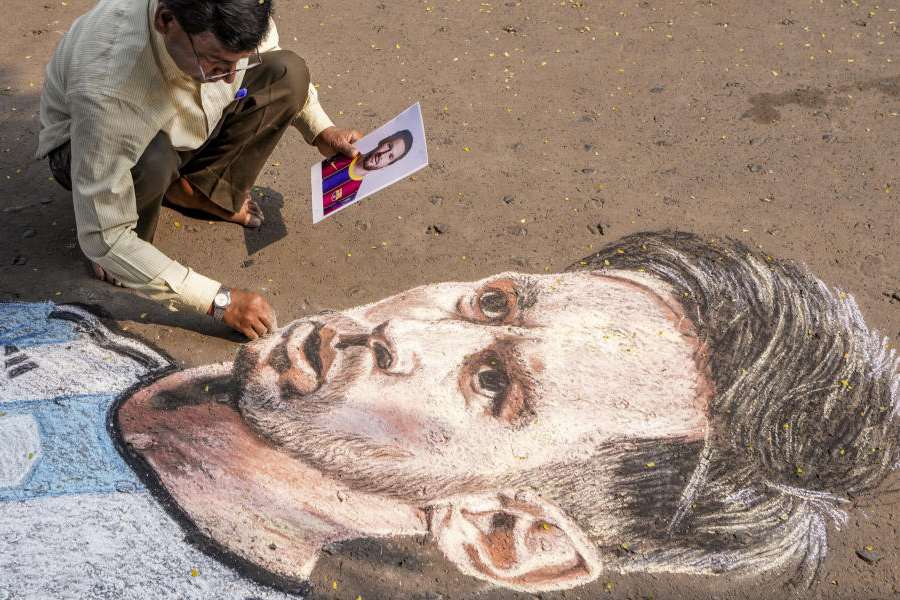 |
Jagmohun Mundhra — “Jag” to anyone who knows him — and I are having lunch in a Soho café after a private screening of Shoot on Sight, his latest important “work of fiction based on real events” in London during the terrible summer of 2005. It was when four British Muslim suicide bombers, three on the Underground and one on a bus, killed 52 people and injured 700.
Shoot on Sight follows his previous film Provoked (2006), which starred Aishwarya Rai as a battered housewife, which, in turn, had followed Bawandar (2000), about the rape of an Indian village woman, starring Nandita Das. By the way, Jag says he is not upset that Ash forgot to invite him to her wedding though she certainly owes him a huge favour.
Jag claims Amitabh Bachchan had agreed to play the central role of “Commander Tariq Ali” in Shoot on Sight but decided to pull out after having second thoughts about the wisdom of portraying a senior Pakistan-born Muslim officer in London called upon to confront Islamic terrorists. The role went instead to Naseeruddin Shah, with Greta Scacchi playing his English wife, Om Puri cast as a radical mullah and Gulshan Grover a halal butcher.
The film has an element of the tragic case of Jean Charles de Menezes, an innocent Brazilian shot dead by armed police who believed he was another suicide bomber.
After the suicide bombings of July 7, 2005, when Jag happened to be in London finishing post production on Provoked, the bearded director found taxis would not stop for him — “they were just damn scared”.
Another development inspired him to make Shoot on Sight. He noticed Scotland Yard projecting assistant commissioner Tarique Ghaffur, the most senior Muslim officer in Britain, as its public face.
“The whole idea came to me that they are putting him up for television because he is Muslim,” speculates Jag.
“I wanted to tell the story as a fast paced thriller from the point of view of a liberal, integrated Muslim, who has been in the police force for 30 years and is married to a white woman, never asking her to convert,” he explains, adding, incidentally, that “Naseer never asked his wife, Ratna, to convert — she’s Hindu.”
The English-language film, which is being dubbed into Urdu, poses the question (included in the posters): “Is it a crime to be a Muslim?”
Although Jag would like to go on to make a movie one day about the plight of women who cannot conceive — he argues Indian society humiliates such women — he announces he is done with making “strong, social issue films with a message.” Having gained notoriety, unfairly he feels, for having done “erotic thrillers” in the past — he was commissioned to direct eight of these by Ashok Amritraj, the Indian-origin producer in Los Angeles — Jag admits he had to “reinvent” himself to do Bawandar with Nandita Das. She took a lot of persuading but her agreement marked a turning point in his career.
“But I am going to reinvent myself in a different way now,” he reveals. “I will do Bollywood now. My next set of films is going to be very audience friendly. I am going to do a comedy, with Govinda, in Hindi.”
This is meant to be a light-hearted remark but there are circumstances in which he would be tempted to make one more erotic thriller in the best possible taste, of course — it would be about the beautiful Bengali women of Calcutta, the beloved city of his childhood.
His voice softens: “Calcutta is very special to me.”
He laughs: “I am especially partial to Bengali women. They have very nice, big eyes, they have nice, luscious hair — I find them fascinating because, as I became aware of my attraction for the opposite sex, my first attraction was for my art teacher, a Bengali woman. I was 12.”
Now an American citizen who has registered himself as a “PIO” (Person of Indian Origin), Jag was born into a middle class Marwari family in Nagpur on October 29, 1948. The family had settled in Calcutta where his father set up a small plastics factory. Even when his parents moved to Bombay, Jag stayed on with his grandparents in their Burrabazar home, going to the local Marwari school, Sri Daulatram Nopany Vidyalaya. His strict grandmother banned him from going to the cinema, but he acquired boyhood ambitions of becoming a film-maker “after running away from a cricket match in Victoria Garden, going to Dharamtalla Street, and seeing Guru Dutt’s Kaagaz Ke Phool at the Orient”.
It was a relief occasionally to escape from Burrabazar’s conservative Marwari society to visit rich relatives in Tollygunge and Alipore.
There is a touch of the lyrical as Jag, like the French novelist Marcel Proust, engages in remembrance of things past: “You see next door neighbours are Bengali and I would see on the roof top after bath the women come out to dry their hair and put their colourful saris on the line. Those images are so vivid in my mind, erotic, so beautiful. They have such beautiful voices. They would be singing while they were doing their chores.”
So what about a Bengali erotic thriller?
“I would love to do it,” he sighs. “That is why I like Aparna Sen’s (1984) film Paroma. It has some of those elements of desire.”
After studying engineering for five years at the Indian Institute of Technology in Mumbai, where he became an enthusiastic member of the film society, Jag departed in 1968 for America and did his MBA, and a PhD in “the marketing of motion pictures” at Michigan University. Back in Bombay, his father died suddenly, a day before Jag was due to start shooting his debut film Surag, for which a foreign crew had arrived from the United States.
“What do I do?” he asked his mother.
He remembers her reply: “ ‘If by not going to your film shooting, your father will come back, then don’t go. Otherwise, you have the responsibility for so many people.’ Her way of saying life has to go on.”
And it has for Jag. He has survived legal action and “lost my shirt” over Kamla, a 1984 film with Shabana Azmi and Deepti Naval “which became a metaphor for women’s slavery.” Quitting India, he decided to base himself in Los Angeles and was asked to direct his first erotic thriller, Night Eyes, in 1990 by Amritraj. Until then, while he had done crime dramas, learning crisp western-style editing on the job, “I had never even shot a kiss.”
“Night Eyes did 40 times its investment — a $750,000 budget and $30 million worth of business,” he points out proudly. “I did not have to look for work after that. For any independent person who wanted to make an erotic thriller in Los Angeles, the first person on the wish list as a director was me.”
He regained financial stability, maintained a comfortable residence in Los Angeles and educated his daughter, Smriti, (now 27, “she is doing her Master’s in film from Columbia University”). At last he senses he has put behind him the smear, “Sultan of Sex,” bestowed on him by an Indian film magazine. He has also survived two health scares, including fungus in his foot which he feared would need to be amputated, and intestinal bleeding. He emphasises that he has been happily “married to the same woman”, Chandra, a Bombay girl, for 36 years.
Although he does not disown the erotic films of the past, he declares he has moved on. In any case, the period of such erotic films as Fatal Attraction and Basic Instinct, which attracted big name stars including Sharon Stone and Glenn Close, has now passed. “The erotic thriller market is actually no longer erotic. It has become semi-pornographic and hardly thrilling. I never wanted to associate with that market and there is no way I am going back to those.”
He says: “Earlier it was not possible for me to work in India. There was no discipline of any sort. Nowadays, it is because there is a whole new mindset which has come in.”
He tells me: “I would love to make something about my childhood in Calcutta. The proudest moment in my life was being invited to the Calcutta Film Festival at Nandan in 2001 as a delegate from the US for the screening of Bawandar. Having grown up in what now seems a ‘Marwari ghetto,’ here I was, going through Chittaranjan Avenue, escorted by the police as a VIP. I could not believe it.”
He adds: “The first thing I do when I land in Calcutta — it’s been a while now — is I go to Dhakuria Lake and have this big jhal muri: the taste is from my childhood. I want to go to New Market, have phuchkas. I want to do all that stuff which reminds me of the aspirations of my youth.”










